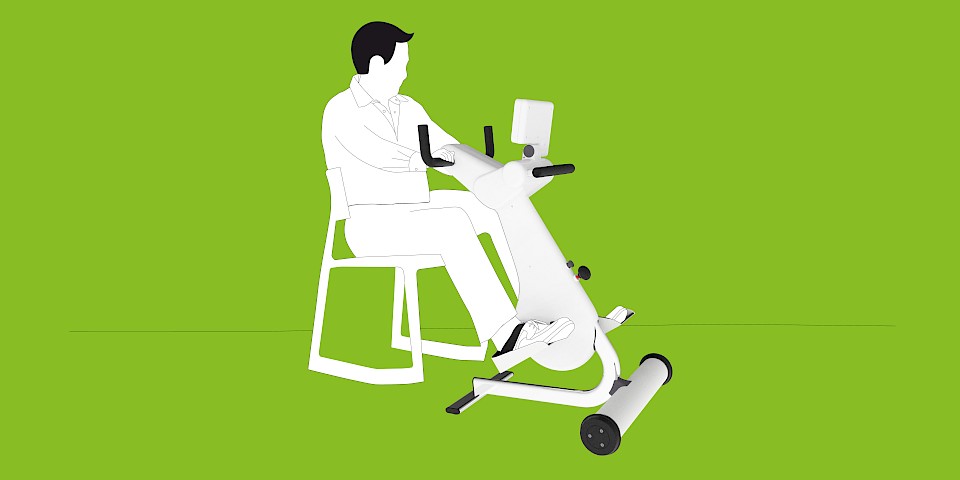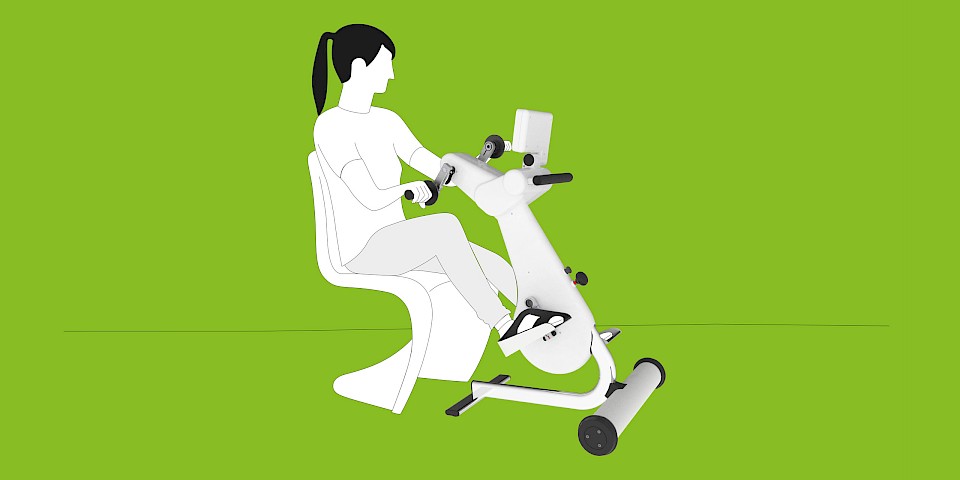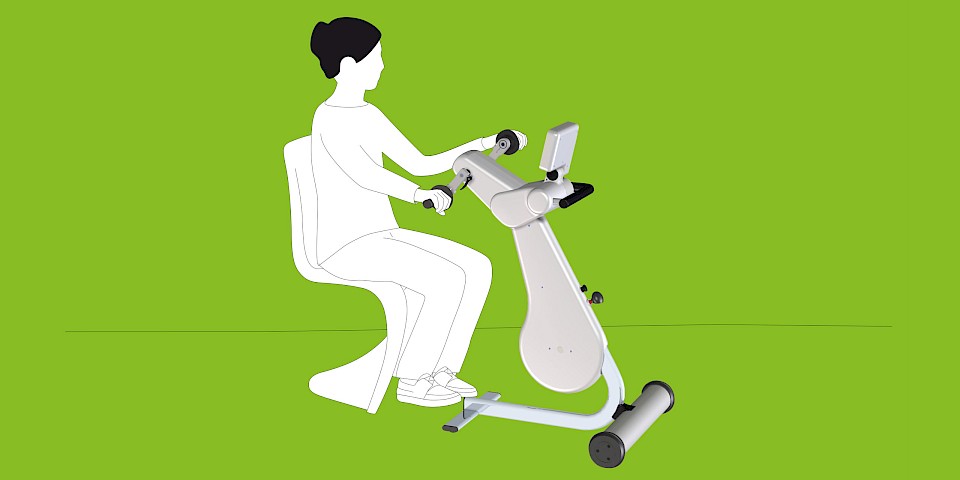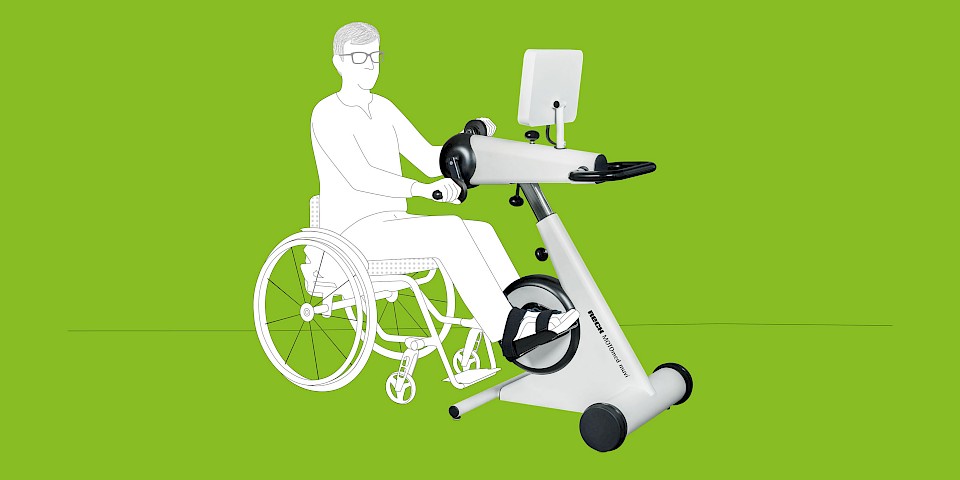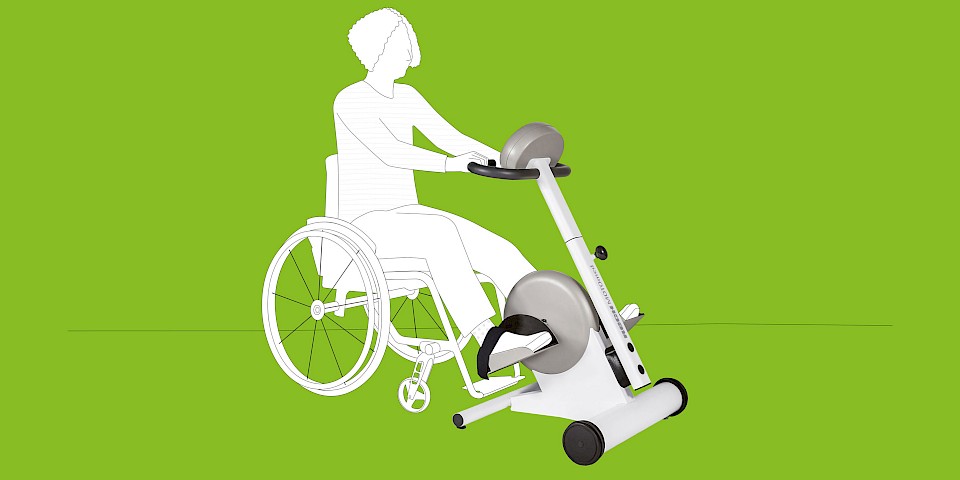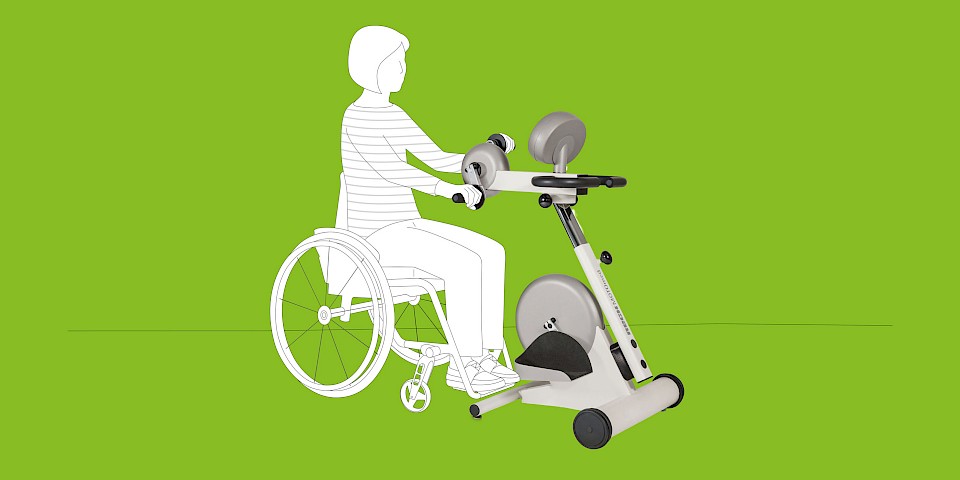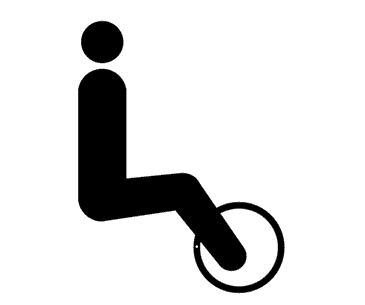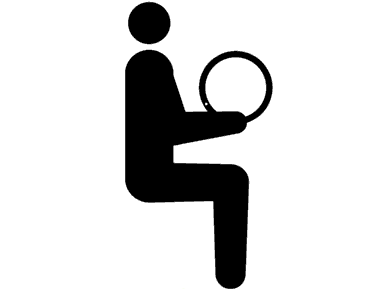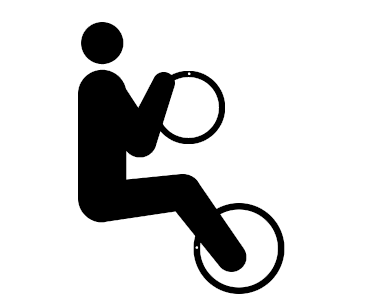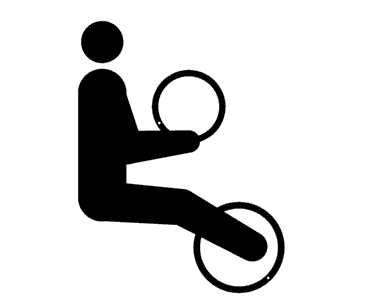Multiple Sclerosis
Safe movement even with spasticity
A lack of movement is usually more distinctive in people affected by the autoimmune disease multiple sclerosis than in other people. Very often, the effects of a lack of movement accompany or increase MS symptoms. The inactivity of the MS patient depends on the state of health. The MOTOmed movement therapy offers daily movement even to immobile patients. MS patients can train with the motor-driven movement therapy device out of a chair or wheelchair in active mode, motor-supported or with motor.
A regular MOTOmed leg or arm training eases spasms, loosens and strengthens the skeletal muscle mass, improves mobility, positively influences bowel and bladder function, stimulates blood circulation in the legs, reduces edema and stabilizes the emotional state of health. By regular movement, MS patients can reduce fatigue symptoms (abnormal exhaustion). Moreover, movement helps to decrease the risk of a lack of movement such as obesity, cardiovascular diseases, bone fractures (risk of falling), diabetes mellitus and osteoporosis.
Configure your personal MOTOmed
Use the MOTOmed Product Configurator to configure your MOTOmed according to your requirements. Quickly, easily and without obligation. Try it out and configure your personal and individualized MOTOmed now.
MOTOmed Movement Therapy
MOTOmed Movement Therapy was developed for people with movement restrictions and complements physical, ergo and sports therapy measures. Users can train while seated in a wheelchair or from a chair.
In Germany, the device-based movement therapy with the MOTOmed is recognized as an aid for many indications by the statutory health insurance. It is worthwhile to inform yourself!
Therapy modes
passive
The effortless motor driven movement is ideal for the regulation of muscle tone, loosening stiff muscles and for early mobilization after long rests. Passive training stimulates blood circulation, digestion and joint flexibility.
assistive
In motor-supported movement therapy, the function MOTOmed ServoCycling enables easy transition from passive to active training. A motor-supported movement stimulates strength and endurance even with minimal muscle strength.
active
An active training with own muscle power against finely adjustable resistance levels strengthens leg, arm and upper body muscles and stimulates the cardio-vascular system.
Achieving best therapy goals through interval training
Alternating phases of strain and recreation (intervals) through active and passive training give a higher training stimulus which leads to a better therapy success.
Therapeutic goals
- Promote walking
- Reduce the consequences of lack of movement
- Reduce spasticity
- Activate residual muscle strength
- Strengthen the psyche and well-being
- Counteract fatigue
Videos
Scientific studies and research results about MOTOmed movement therapy with Multiple sclerosis
3.2) Hochsprung A., Granja Dominguez A., Magni E., Escudero Uribe S., Moreno Garcia A. (2017). Effect of visual biofeedback cycling training on gait in patients with multiple sclerosis. Neurologia, 35(2), 89-95., DOI: 10.1016/j.nrl.2017.07.008
3.1) Rösche J., Paulus C., Maisch U., Kaspar A., Mauch E., Kornhuber H.H. (1997). The effects of therapy on spasticity utilizing a motorized exercise-cycle. Spinal Cord, 35, 176-178., DOI: 10.1038/sj.sc.3100376


